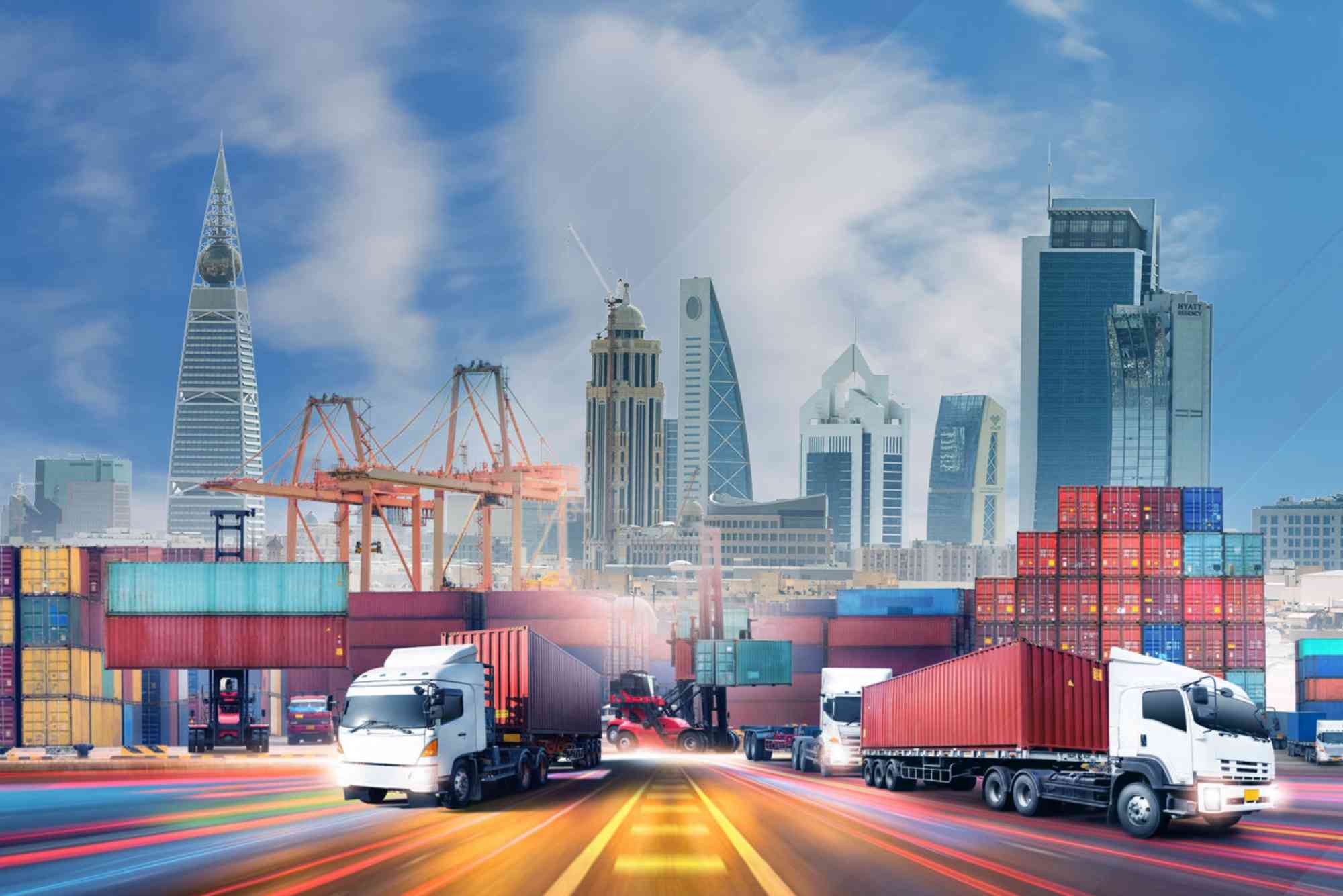Regional Logistics Investments Accelerate as GCC Cities Compete for Hub Status
Dubai, UAE, 19 November 2025 – A wave of synchronized infrastructure spending is propelling every Gulf Cooperation Council (GCC) member state into a head-to-head contest for the region’s premier logistics hub crown, according to new market data released this week.
Fresh private-equity capital, sovereign-backed rail schemes, and automated port upgrades are converging to push the GCC freight and logistics market from USD 81.3 billion in 2025 to an estimated USD 109.9 billion by 2030, a compound annual growth rate of 6.2 per cent—double the global average for developed markets .
National visions have moved from white-paper concepts to shovel-ready projects. Saudi Arabia’s National Transport and Logistics Strategy—targeting top-ten global-hub status by decade’s end—has already cut import clearance to two hours via the “Fasah” single-window platform, down from seven-to-twelve days in 2019 . Across the border, the UAE’s 2040 Urban Master Plan locks in a 200-square-kilometre Dubai Logistics Corridor that reduces sea-to-air transfer to 60 minutes, while Abu Dhabi’s Khalifa Port is adding a second COSCO-run terminal aimed squarely at transshipment cargo now routed through Singapore .
Private capital is matching government ambition. In October 2023, regional investment house GFH launched the USD 1 billion GCC Logistics Investment Company (CEIC) to acquire and develop Grade-A warehouses near Jebel Ali and Riyadh’s King Khalid International Airport. The platform’s 3-million-square-foot portfolio is fully leased to e-commerce giants Noon and Deliveroo, underscoring demand from last-mile operators scrambling to serve a GCC online-retail sector growing 20 per cent year-on-year .
“Logistics is no longer a support function—it is the economic engine GCC countries are betting on to offset hydrocarbon volatility,” said Miriam Al-Falasi, Chief Executive of CEIC. “Our tenants are signing 10-year leases because they see consumption rising and they need temperature-controlled, automation-ready facilities within 45 minutes of both a port and an airport. That combination now exists here, not just in Rotterdam or Shanghai.”
Intermodal connectivity is the next battleground. The long-delayed 2,177-kilometre GCC Railway—priced at USD 250 billion—has locked financing for its UAE–Oman segment and is expected to break ground in Q1 2026, linking Sohar Port to Abu Dhabi’s Khalifa Port and onward to Saudi Arabia’s planned land-bridge rail line . When complete, the network will allow a container off-loaded in Salalah to reach Riyadh by rail in 18 hours, compared with 36 hours by truck today, eliminating an estimated 1.2 million truck journeys annually and slipping logistics costs by 12 per cent, according to feasibility studies by the Gulf Railway Authority.
Smaller states are carving out niche advantages to stay competitive. Oman is marketing Duqm Port as the only deep-water facility outside the Strait of Hormuz capable of handling 25,000-TEU ultra-large container vessels, while Bahrain’s new Khalifa Bin Salman Logistics Zone offers 100 per cent foreign ownership and zero corporate tax for 20 years. Even Kuwait, historically the region’s laggard, opened the USD 3 billion Mubarak Port in March 2025 with direct roll-on/roll-off links to Sharm El-Sheikh, positioning itself as the northern gateway for Egyptian fresh produce bound for Gulf supermarkets .
Environmental metrics are increasingly shaping investment decisions. Blackstone-backed GLIDE, a USD 5 billion regional warehouse platform formed with Abu Dhabi–headquartered Lunate, is mandating solar-ready rooftops and LEED Gold certification for every new facility. “Investors require ESG compliance as a baseline, not an option,” said Al-Falasi. “Our latest Riyadh distribution centre generates 28 per cent of its energy on-site and cuts water use 40 per cent through grey-water recycling—benchmarks now written into every construction tender.”
With 60 per cent of the world’s population within an eight-hour flight, GCC airports are reinforcing the cargo side of the equation. Dubai’s Al Maktoum International is on track to handle 12 million tonnes of freight annually once its third runway opens in 2027, while Saudi Arabia’s new King Salman International Airport at Riyadh will offer 3.5 million tonnes of dedicated cargo capacity upon completion in 2030 . The expansions complement port upgrades: Saudi ports added seven new shipping services in 2023 alone, connecting the Kingdom to 43 additional global destinations, including direct routes to India, East Africa, and the Mediterranean .
Market analysts warn the build-out must be accompanied by regulatory harmonisation. “Each country is moving fast, but seamless cross-border movement still requires unified customs codes and a single GCC transit document,” noted a recent report by AInvest . Pilot programmes for a bloc-wide Authorised Economic Operator (AEO) scheme are underway, yet only 112 companies hold simultaneous AEO status in more than one GCC state—less than 5 per cent of qualifying regional shippers.
Still, investors remain bullish. The warehouse vacancy rate across the GCC sits at 1.8 per cent, the lowest globally, driving prime rents up 14 per cent year-on-year in Dubai and 11 per cent in Riyadh, according to JLL’s Q3 2025 Logistics Outlook. “Demand is structurally embedded by population growth, economic diversification, and the shift to just-in-case inventory,” said Al-Falasi. “The question is not whether the region will become a global hub, but which city will capture the largest share of the value chain.”
About CEIC
GCC Logistics Investment Company (CEIC) Ltd. is a Bahrain-domiciled private platform focused on acquiring, developing, and operating institutional-grade logistics assets across the UAE and Saudi Arabia. CEIC’s portfolio exceeds 3 million square feet and serves leading e-commerce, cold-chain, and third-party logistics providers. The company is jointly owned by GFH Financial Group and a consortium of Gulf institutional investors.
Media Contact
Sarha Al-Mansoori
Director of Corporate Communications
G42
Email: media@g42.ai
Phone: +97125550100
Website: www.g42.ai






